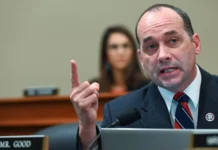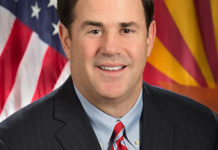Arizona hospitals that have cancelled elective surgeries on the orders of the governor while preparing for a surge of coronavirus patients that hasn’t happened are feeling huge financial pressure, an industry group said Thursday.
Hospitals are planning furloughs, pay cuts, forced vacations or other measures to reduce costs as revenue has plummeted by as much as 40%, according to the Arizona Hospital and Healthcare Association.
They want Gov. Doug Ducey to ease up on the ban on elective surgeries he imposed March 19 that was designed to open space for a surge of virus patients and preserve limited supplies of masks, gowns, gloves and other protective equipment.
Ducey hasn’t acted, although spokesman Patrick Ptak said Thursday the governor is working closely with hospitals to ensure they’re prepared for a surge in patients and the best public health decisions are made.
As they await a response, hospitals are rushing to cut costs.
Dignity Health, which runs five hospitals in metro Phoenix, is asking its staff to trim hours or use paid time off because hospital use is way down.
The Mayo Clinic, a specialty hospital in north Phoenix, has seen the number of surgeries plummet by at least 50% and the number of hospitalized patients drop by 50%. Hospital CEO Dr. Richard Gray said that despite other cost-cutting efforts, temporary furloughs and pay cuts will start on April 28.
“The decision to proactively postpone elective patient care was the right one, but it eliminated the majority of our revenue at the same time we are making critical investments to develop and expand testing, conduct research to stop the pandemic and re-align our facilities and care teams to treat COVID-19 patients,” Gray said.
A small southern Arizona facility, Santa Cruz Valley Regional Hospital in Green Valley, is asking the state for a bailout to keep it afloat after revenue dried up. Even Northern Arizona Healthcare, whose Flagstaff Medical Center has seen a crush of COVID-19 patients from the area and the Navajo Nation, has seen a 17% revenue drop. It cut expenses and executives are putting 10% of their pay into a pool to help operating room and other staff that have seen less work, said Josh Tinkle, the top hospital administrator.
Arizona health officials reported eight more virus deaths Thursday, bringing the statewide death toll to at least 150 people. The updated Health Services Department numbers show the state now has more than 4,230 cases of COVID-19 — an increase of 272 cases in one day and up more than 1,100 from a week ago.
Flagstaff Medical Center has become one of the busiest in the state for treating virus patients, with 40 virus patients Thursday and 28 more suspected cases. More than 30 of those patients are on ventilators, a machine that pumps oxygen to lungs.
Hospital officials said they had 31 patients die of the disease since the outbreak began.
There are signs the disease trend is starting to level off in Arizona. Much of that is attributed to Ducey’s stay at home order and closures of schools, restaurants, bars and other gatherings places.
That is encouraging the hospital association to push for an easing of the elective surgery ban. Ann-Marie Alameddin, the association’s president and CEO, said Arizona hospitals are losing between $430 million and $575 million a month. The $2.2 trillion federal rescue package is expected to send those Arizona facilities about $220 million.
“Our healthcare workers are at the front lines of this battle, and we do not want to see that patient surge, we do want to control the spread,” Alameddin said. ”But we do think with this enhanced data that we have, with more reporting from hospitals to the Department of Health Services, that we can really see what the spread is and we can adjust our policies based on the current data.”
For most people, the coronavirus causes mild or moderate symptoms, such as fever and cough that clear up in two to three weeks. For some, especially older adults and people with existing health problems, it can cause more severe illness, including pneumonia and death.
Republished with the permission of the Associated Press.















